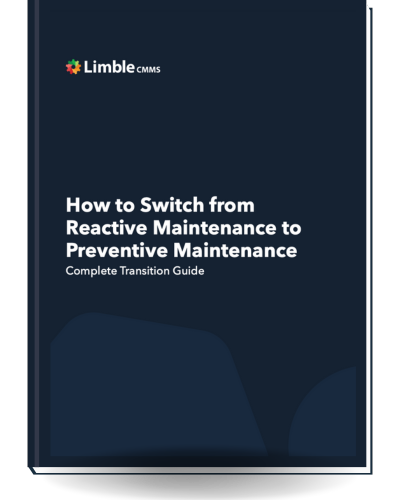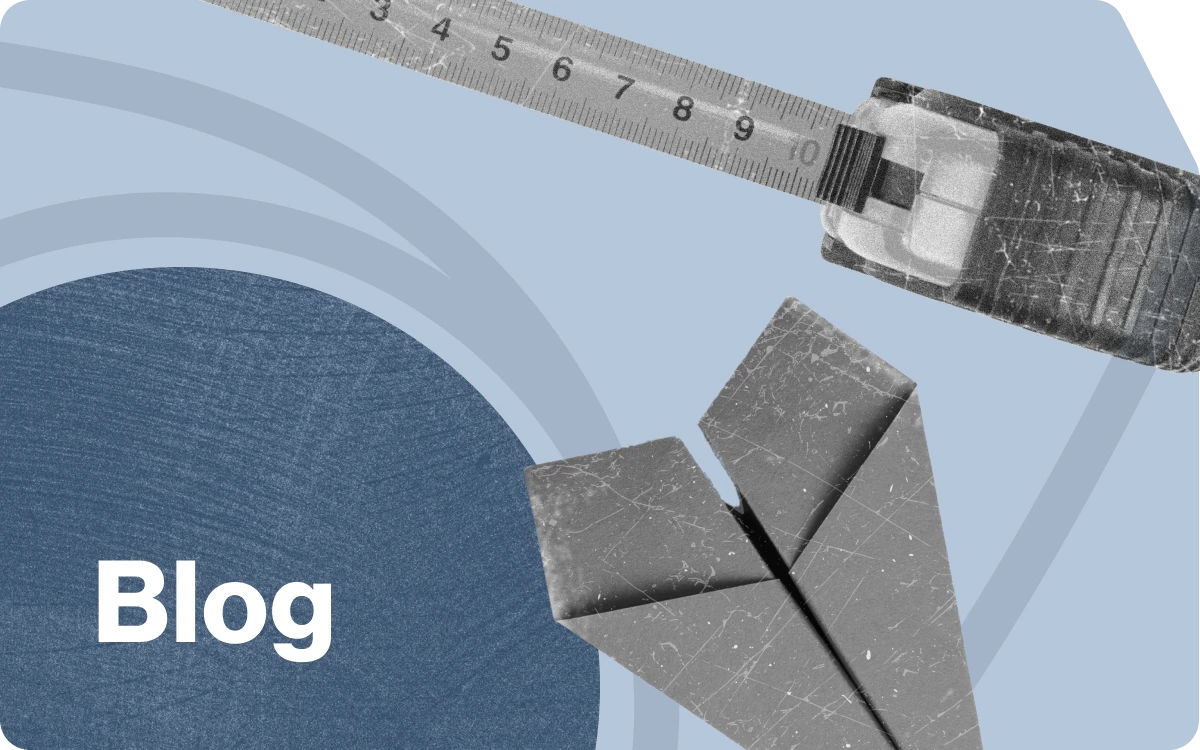Preventive maintenance (PM) programs include processes and policies for proactively completing maintenance tasks to keep critical assets running smoothly.
Managing a preventive maintenance program helps organizations across industries reduce unplanned equipment downtime, extend the lifespans of critical assets, boost productivity, and cut maintenance costs.
Though a proactive approach to asset and facility management requires an up-front investment and ongoing effort, it all tends to pay off when maintenance professionals see these benefits and more. While comparatively cheap and simple, reactive maintenance programs tend to prove more costly in the long term.
What is a preventive maintenance program?
Preventive maintenance programs are organized, strategic approaches to performing regular maintenance tasks that address issues proactively. PM programs include standardized processes, guidelines, and software solutions for ensuring routine maintenance is scheduled to minimize the number and severity of equipment breakdowns.
Understanding preventive maintenance
Preventive maintenance is a proactive approach to asset management. Instead of carrying out corrective maintenance after breakdowns and other issues occur, proactive maintenance activities aim to prevent these issues from occurring in the first place.
Common approaches to scheduling preventive maintenance tasks include:
- Time-based preventive maintenance: With a time-based preventive maintenance strategy, regular inspections and maintenance occur on a set schedule. Regardless of a piece of equipment’s usage history or condition, maintenance teams will service them once a certain amount of time has elapsed.
- Usage-based preventive maintenance: A usage- or meter-based approach to preventive maintenance schedules involves performing maintenance tasks after machines spend a certain amount of time in production.
A major challenge in preventive maintenance is finding the most efficient schedule for PM tasks. Conduct preventive maintenance too often and you may waste time servicing equipment that doesn’t need your attention. Too little maintenance and your planned maintenance schedule may get interrupted again and again by unexpected breakdowns and costly repairs.
Different types of maintenance strategies
- Reactive maintenance: The alternative to preventive maintenance, reactive maintenance involves taking corrective action to repair broken assets. Maintenance departments only receive notifications to create and issue work orders after a piece of equipment or system has already failed.
- Predictive maintenance (PdM): A more advanced type of preventive maintenance, predictive maintenance involves using condition-monitoring technology and algorithms built from data including maintenance histories and manufacturer recommendations to predict when equipment failures will occur. With these insights, organizations can plan and schedule preventive maintenance work at the ideal time.
- Prescriptive maintenance (RxM): This type of preventive maintenance is even more advanced. Prescriptive maintenance not only uses advanced data analysis to predict the likelihood of failure, but also offers team members guidance for avoiding failures.
Most organizations leverage a mix of different types of maintenance strategies. The ideal approach for a specific asset will depend on factors including the asset’s business criticality.
Benefits of preventive maintenance programs
The benefits of preventive maintenance tend to outweigh the up-front costs and complications in the long term.
- Cost savings: With a preventive maintenance program, businesses save thanks to improved spare parts inventory management, better allocation of resources, and fewer instances of unplanned downtime.
- A safer workforce: Unexpected breakdowns can contribute to an unsafe workspace. With plans in place for ensuring machines always run as planned and clear procedures for when they don’t, you’ll keep team members safe and productive.
- Extended asset lifespans: When you stop machines from breaking down you help minimize wear and tear alongside downtime. You’ll ultimately extend the useful lifecycle of these assets.
- Reduced energy usage: Proactively maintaining HVAC systems, for example, can dramatically improve energy efficiency and potentially help you meet sustainability goals.
Preventive maintenance program vs. preventative maintenance plan
Maintenance planning involves establishing a framework for recognizing and addressing problems like equipment breakdowns to keep systems in working condition. A preventive maintenance program will include several preventive maintenance plans. Each type of asset will likely have its own dedicated PM plan for maintenance processes. Plans may also vary from facility to facility.
PM schedules vs. PM plans
Schedule and plan sound like synonyms, but they are distinct terms in a maintenance context. A PM plan includes details on how maintenance work will be completed on a piece of critical equipment. PM schedules determine who will complete the work and when. You can’t schedule maintenance until you’ve planned it.
What do you need for an effective preventive maintenance program?
No two PM programs are the same, but all effective programs share some common components.
- Strategic goals and objectives: Maintenance programs require goals to help inform their underlying strategy and prioritization of work.
- Clear triggers for preventive maintenance work: As noted above, different types of PM programs use different types of triggers to initiate maintenance work. Establishing these and communicating them to all team members will take the guesswork out of most maintenance scheduling.
- A well-trained staff: More advanced and proactive maintenance programs often require professionals with specialized experience and skills.
- Procedures and policies: You can’t improvise a preventive maintenance program. Clear workflows for identifying problems, issuing work orders, and completing maintenance tasks are essential for maintaining compliance and efficiency.
- Technology: For maximum efficiency and performance insights, organizations should leverage maintenance software to optimize their programs.
Do you have what it takes to manage a preventive maintenance strategy and maximize equipment effectiveness? Download our preventive maintenance checklist to find out.
Download our Free Preventive Maintenance Plan Template!
Following a consistent Preventive Maintenance Plan can make life easier. Use this template to create your own.

5 steps for establishing and managing a preventive maintenance program
- Earn buy-in for preventive maintenance: Taking a proactive approach to managing your assets may require an investment in new technology and will definitely require a change of mindset. To promote compliance with your new processes and the long-term success of your program, you need to secure the buy-in of all the necessary stakeholders within your department and across the business.
- Establish goals and priorities tied to maintenance metrics: Your preventive maintenance program should suit broader organizational goals. You should also set goals specific to the program and tie them to maintenance metrics and key performance indicators (KPIs). Keeping a close eye on these factors will help you gauge the effectiveness of the program over time and promote continuous improvement.
- Create a framework with clear policies and standard operating procedures (SOPs): For maximum efficiency, your program requires clear policies and processes. Accessible documentation and streamlined workflows will make it simple for programs to get up and running and remain effective in the long term.
- Implement preventive maintenance software: Paper, pencils, and spreadsheets may have sufficed in the past, but modern maintenance technicians require more advanced tools. Condition-monitoring software makes it easier to adopt more and more advanced types of preventive maintenance. Introducing a Computerized Maintenance Management System (CMMS) ties everything together, empowering maintenance with tools for managing assets and analyzing their performance.
- Track performance and make adjustments: Your preventive maintenance program is meant to grow and change over time alongside your organization. Look at metrics like Mean Time Between Failures and the improvements you’ve made to uptime numbers. A deep dive into your team’s performance and the health of your assets can help you pinpoint room for improvement,
Make the transition to preventive maintenance
Need help making the switch to preventive maintenance operations? Download our guide for helpful insights on securing buy-in, evaluating your capabilities, and reaping the benefits of more proactive maintenance work.
Reactive to Preventive Maintenance Transition Guide
How to plan your transition to Preventive Maintenance and avoid the common pitfalls while implementing a PM program

